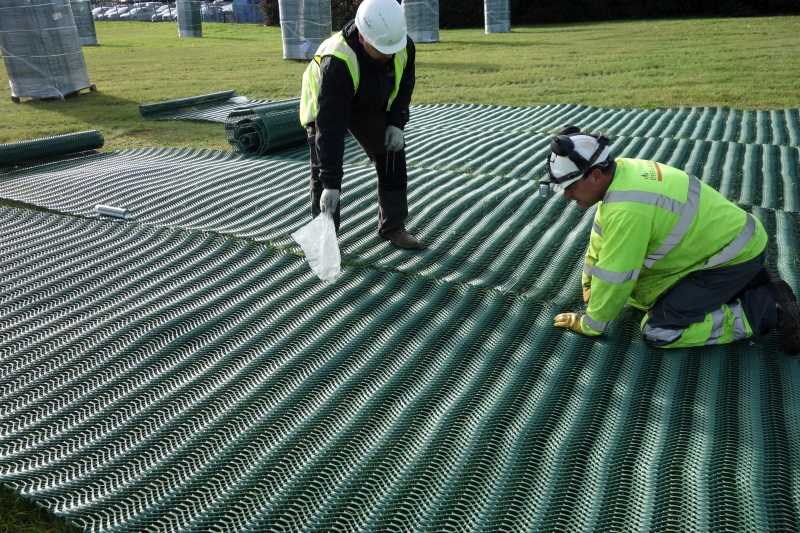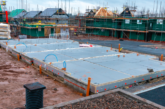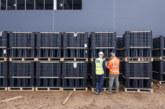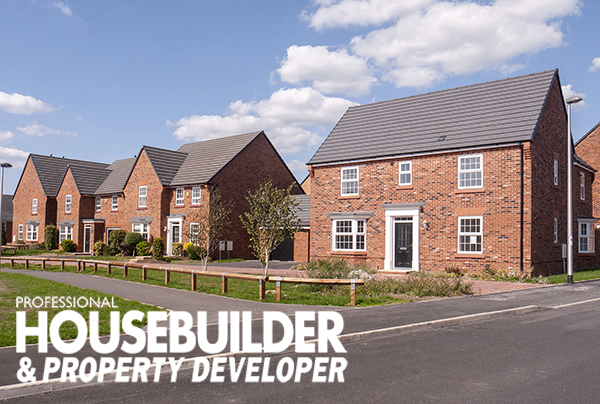
Housing Secretary Steve Reed says ‘Build, baby, build’, but with growing concern over flooding and water contamination on new build sites, how do housebuilders balance governmental pressure with safeguarding new and existing residents? Terram’s Adam Brooksbank comments.
This year’s Labour party conference saw housebuilding in the spotlight, with the new Housing Secretary reaffirming the Government’s commitment to 1.5million homes by 2029.
With major planning reform and investment promised for the coming months, the governmental and public pressure on builders and developers to deliver within compressed timelines is likely to intensify.
Whilst bolstering the construction pipeline can only be good news, the success of Labour’s ambitious home building strategy lies not only in speed but in long-term quality and acknowledgement of existing challenges within the industry.
One such challenge is water management. According to a recent survey[1], 56% of newbuild homeowners believe their home is at risk of flooding, and 72% expect their newbuild to be impacted by climate related weather events in the next 10 years.
As well as climate considerations, there is the issue of drainage. An ageing infrastructure – Victorian era in many areas – is ill equipped to handle the demands of our growing population. While the spotlight is often on London, where systems are operating 80% over capacity[2], drainage is a national issue, with more than half of UK councils [3]experiencing sewer system overwhelm in the last decade.
The 2024 implementation of mandatory sustainable drainage systems for new build properties (SuDs) will go a long way to mitigate flooding risks, but from a time efficiency perspective could present developers with its own challenges.
As a relatively new technology, SuDs implementation could represent a timing pitfall for developers, who may find it hard to come by experienced SuDs system designers and easily accessible specialist materials. To manage this, it’s vital to consider SuDs early in the specification process, and to look for solutions which can meet multiple build criteria for maximum efficiency.
Whilst traditional paving methods may feel more familiar to specifiers, and could even present cost savings, the reality is that these solutions are not only less effective, but more time-consuming too. The setting time of concrete, for example, can add days to a build, whilst the inclusion of loose gavel in a SuDs system can result in wider complications from the point of view of accessibility for wheelchair users and disabled residents.
Conversely, the early specification of geosynthetic water management materials can not only save time but provide developers with an environmentally friendly solution which is not only SUDS compliant but environmentally friendly. At Terram, for example, we offer both on-the-ground and underground solutions to support effective water management, all of which are designed to not only meet regulations, but actively enhance urban landscapes, without delaying the timescale of a development.
Whilst water management specification alone cannot resolve the pressure on housebuilders to deliver quality on a deadline, it does represent a broader point. While the Government’s aggressive prioritisation of homebuilding is laudable, it must not come at the cost of the industry’s commitment to quality.
In the words of Eddie Tuttle[4], director of policy, research and public affairs at the CIOB, success depends on ‘increasing the availability of skilled workers, improving supply chains and avoiding a race-to-the-bottom approach to procurement’. For developers, that means seeking innovative and efficient solutions, for the Government, it means providing the industry with the tools it needs to make a success of Labour’s ‘building blitz’.
[1] Over half of new build homeowners believe their home is at risk from flooding – Aviva plc
[2] SuDs – the long wait for implementation is over
[3] Flood cleanup costs reach up to £566m per year, with 57% of councils reporting overwhelmed sewers – Water Magazine
[4] ‘Who’s going to build these homes?’ – industry reacts to Labour’s new towns – Construction Management






